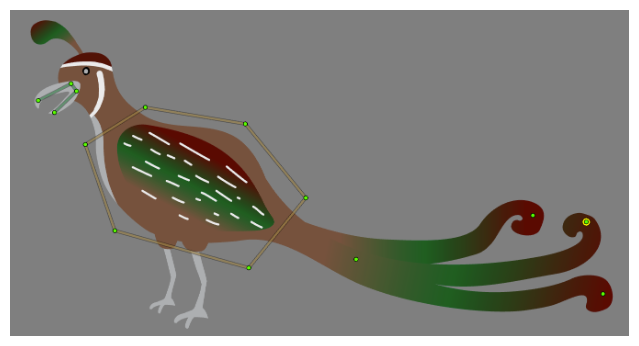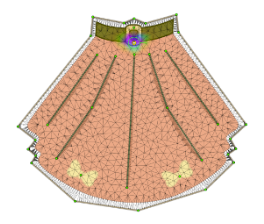Combining Shape-Aware Deformation Methods
Uniquely, the Shape-Aware Deformation allows for the use of multiple deformation methods on a single drawing simultaneously. Each method can either be separated on a single drawing or be combined to impose deformation boundaries on a singular drawing.
Separated
In certain circumstances, you may choose to use multiple deformation methods on a single drawing in different sections. Each method carries its own benefits that make them more optimal in certain situations.

In the case of the bird shown above, the Head, Body and Tail are separated into different deformation types.
Head
The Bone method is optimal for the beak as it is able to give structure and facilitate an opening and closing motion. The Points method is too loose, and the Cage is too tedious to contour and requires too many points to manipulate.
Body
The Cage method is best for the body as it can facilitate a squash and stretch to a large mass with relative ease. The Points method will stretch isolated sections loosely, and the Bone will not be capable of a global squash and stretch action.
Tail
The Points method is superior for the tail as each feather is manipulated easily and efficiently. The Bone is too stiff and offers less flexibility, and the Cage is too tedious to contour and requires too many points to manipulate.
Combined
The combined method will encase the Points and/or Bone method within a Cage. The Cage acts as a limit for the manipulation of the coordinates inside.

In the example above, the Cage allows for general loose deformations while also acting as a limit for the coordinates within. By doing so, when the Points or Bone are deformed, only the desired textures in the skirt are affected without warping the image in an undesirable or unpredictable way. The Cage can be used to move the fabric and the Points and Bone methods control the details within.